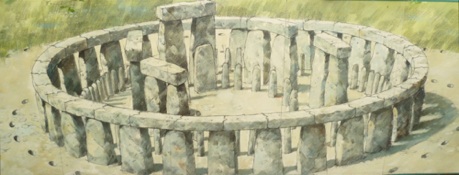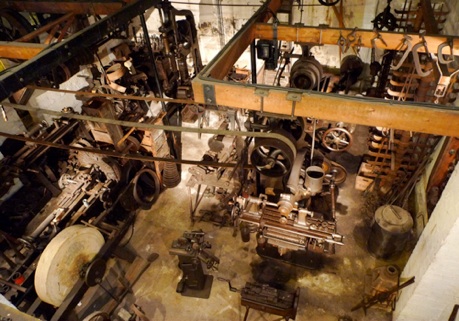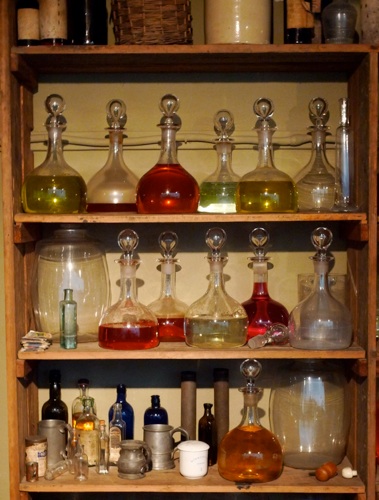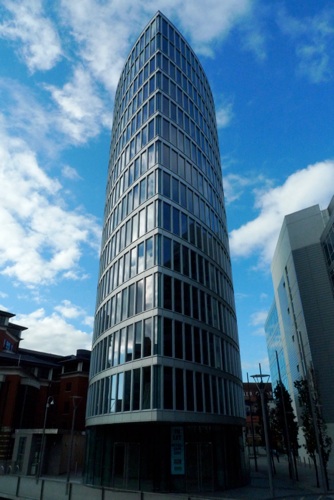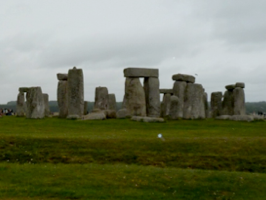
Seeing Stonehenge was not too important to me but I still had to go see it. I wanted to see the place where primitive people found cause to built such an immense structure over 4,000 years ago. What motivated them? How did they transport the huge stones from as far as 240 miles away? What purpose did the site serve? How did they engineer it’s construction? There is no records from when it was built so we just spend our time speculating; there aren’t many answers. Given this mix of unknowns in the presence of this undeniable structure I came away with the sense of wonder I was hoping to feel. Mission accomplished.
However, I didn’t feel this wonder until an hour after I had planned. Seems I didn’t pay enough attention to a public address announcement in the train station when I departed. After reading the schedule for my train and walking to the specified platform I started writing and stopped paying attention … all the while they were rerouting my train to a different platform. When “my train” arrived I blindly climbed aboard, rode the straight shot to a station 20 minutes away where the train promptly retraced it’s path and I disembarked where I had started. An hour after intending to start for Salisbury I finally climbed on the right train, sheepishly.
When I returned to Salisbury from my Stonehenge bus excursion the weather had taken a turn for the worse. It began to rain so I aborted my plans to revisit the town. Most impressive there is the Salisbury Cathedral which is the tallest of all in England, uniform in construction style as it was built entirely in just a few years and most pristine because it was never bombed by the Germans who used it as a flight path marker on their raids. With the relocation of graveyards around the cathedral it’s situated in a beautiful park setting. Gosh, I’m writing this from fond memories of my last visit two years ago. Today I didn’t see it because, as I said, it was raining. 🙂
Remember how yesterday I lamented not having more time for Bath and how there were certain museums I still wanted to see? Today was the day. I made it to both the Museum of Bath at Work and the Postal Museum.
The former was a kick for me, an industrial engineer. Bath at Work featured 100 years and three generations of “pack rattery”. The Bowler family grew into a variety of businesses ranging from foundry work and machining to carbonated beverage production. The whole family seemed pre-disposed to building new businesses around their tinkering interests and to not throwing anything away, EVER. In 1969 when the business finally went under there was an insightful man who managed to preserve this time capsule-of-industry which in 1978 became the heart of the museum. Other local industries such as car manufacturing, cabinetry, and stone mining were covered but the Bowler collection was the dominant feature of Bath at Work.
The Bath Postal Museum boasted of Bath’s role in the development of the global postal system. My first thought was “You’ve got to be kidding!” No, they weren’t. The biggest claim to fame was Bath’s creation of the first postage stamp in the world in 1840, the Black Penny stamp. They didn’t stop there. The first intercity mail was contracted by a Bathonian who made a bundle by pulling London out of the required routing path for mail. The small space was packed with British postal history and was worth the visit.
Upon return to Bristol I took yet ANOTHER path back to my hostel. I do this on occasion to force myself to learn a city. Bristol didn’t make it into my guides’ lists of recommended destinations but I’ve always felt it was a nice city. Walking all around Bristol has helped me reinforce my opinion. It’s a pleasant city but in contrast to a Bath it’s very commercial, more mainstream, and much bigger. My experiences along the lovely waterfront have colored my opinions and, in the end, that’s what counts. Yes, I like Bristol and think I’ll take ANOTHER walk tomorrow morning before heading to Cardiff.

